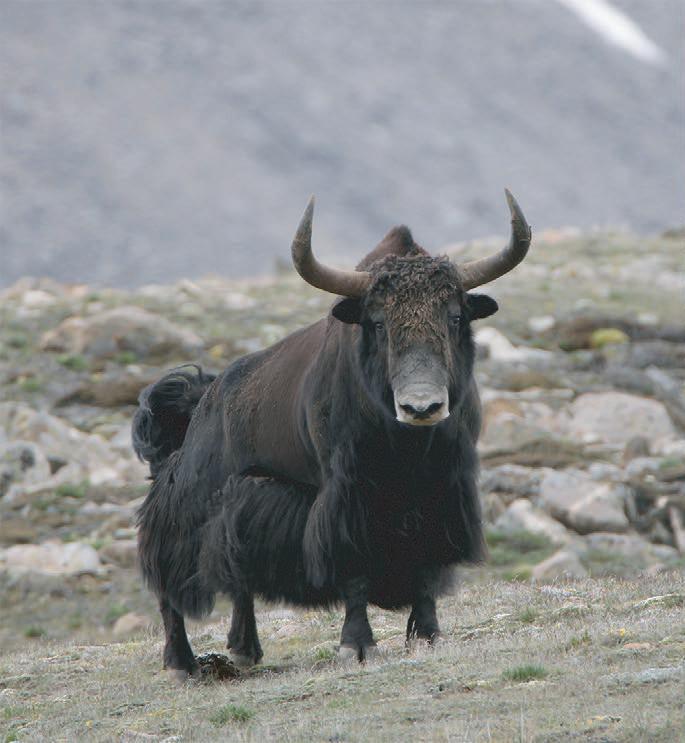Social media video featuring the project.
The capital city of highland wildlife (The land of cultural and natural diversity) Nepal
Protecting the last Living Wild Yaks of Nepal | Naresh Kusi | TEDxBhaktapur
27 Jun 2017 Upper Mustang, Nepal, Indian Sub-continent Biodiversity | Mammals
Population Assessment and Conservation of Wild Yak (Bos mutus) in Upper Humla, Nepal
Establishing the First Population Estimate for Wild Yaks in Nepal and Strengthening Efforts for their Conservation Following the Rediscovery
This project is aimed at performing genetic analyses of wild yaks in Nepal to provide a strong base on which IUCN can formally recognize the rediscovery of wild yaks in Nepal, which is pending to date due to the lack of genetic verification. We also aim to investigate hybridization between wild yaks and domestic yaks because the phenomenon poses a significant threat to wild yaks across their range. We will produce wild yak fables and a conservation booklet with appropriate illustrations and photographs to enhance conservation awareness among the local communities living in the landscapes with wild yak habitats in Nepal.

Wild yak with its dung, Upper Humla. © Naresh Kusi.
The wild yak (Bos mutus) rediscovery in Nepal, inferred based on morphology and local knowledge, was informed to the scientific community in 2015 (Acharya et al., 2015). But, in the lack of genetic verification, the IUCN has not recognized the finding to date (Buzzard & Berger, 2016).
We will collect non-invasive genetic samples of wild yaks from heads and horns kept in monasteries and mountain passes, pelt (s) kept in houses of local people and any opportunistically found putative dung samples in the natural habitat. We will obtain genetic samples of domestic yaks from their body hairs (with hair bulb). We will extract DNA off non-invasive genetic samples to generate D-loop and cytochrome b sequences of the mitochondrial genome through PCR amplification followed by sequencing. Wild yaks will be identified by comparing the DNA sequences with reference sequences of domestic and wild yaks in NCBI GenBank database using BLAST (Madden, 2002). We will conduct phylogenetic analyses of the sequences to gain insights into hybridization between domestic and wild yaks (Wang et al., 2010). Once the analyses are conducted of wild yak genetic samples, we will be able to provide a conclusive confirmation to the presence of wild yak in Nepal. Since the IUCN has globally classified wild yak as 'Vulnerable', the stronghold of the species in Nepal is of considerable significance for its global long-term conservation.
We will produce two small wild yak fables and a conservation booklet, all containing appropriate illustrations and photographs, with texts in the local Tibetan and the national Nepali language. These educational materials will nourish conservation awareness among villagers, from the youngest to the oldest community members. Our continued efforts to inform the local and national government authorities on the criticality of the species through talks and workshops will further encourage them to move ahead towards ascertaining transboundary conservation initiatives between Nepal and China for wild yaks. Functioning transboundary conservation will be extremely valuable for the species as it wanders far and is known to penetrate into Nepal from the Tibetan Autonomous Region of China, which may facilitate the reestablishment of intact transboundary populations of wild yaks in upper Dolpa and upper Mustang regions and strengthen their population in upper Humla.
Social media video featuring the project.
The capital city of highland wildlife (The land of cultural and natural diversity) Nepal
Protecting the last Living Wild Yaks of Nepal | Naresh Kusi | TEDxBhaktapur